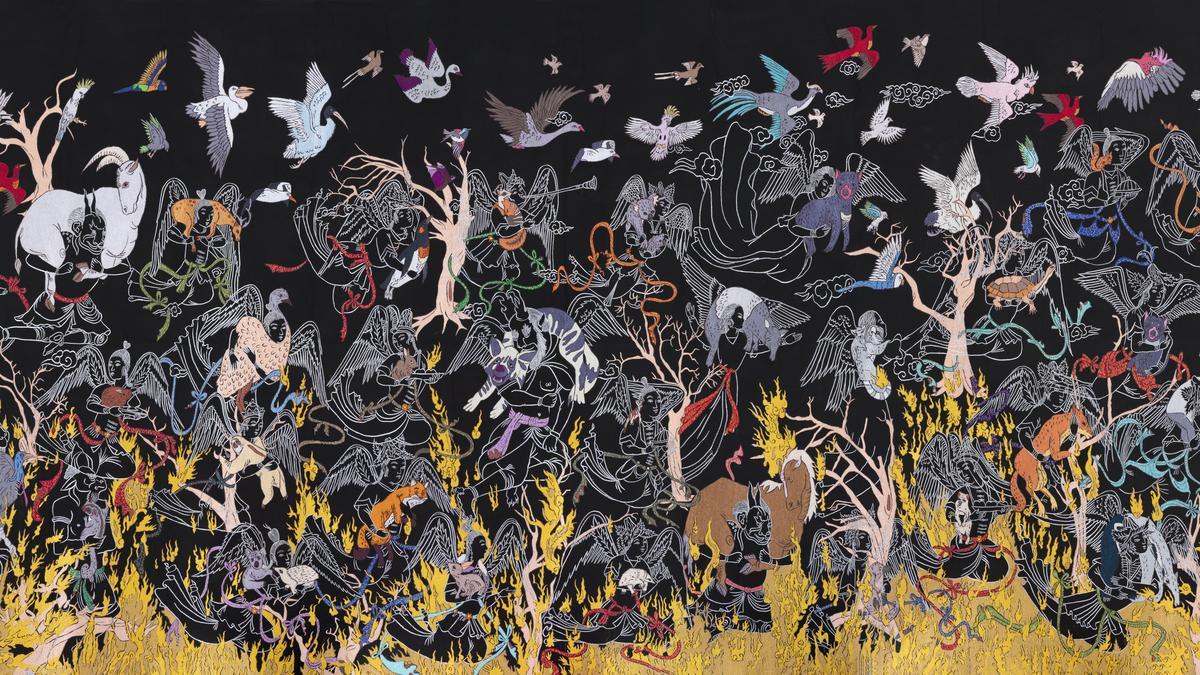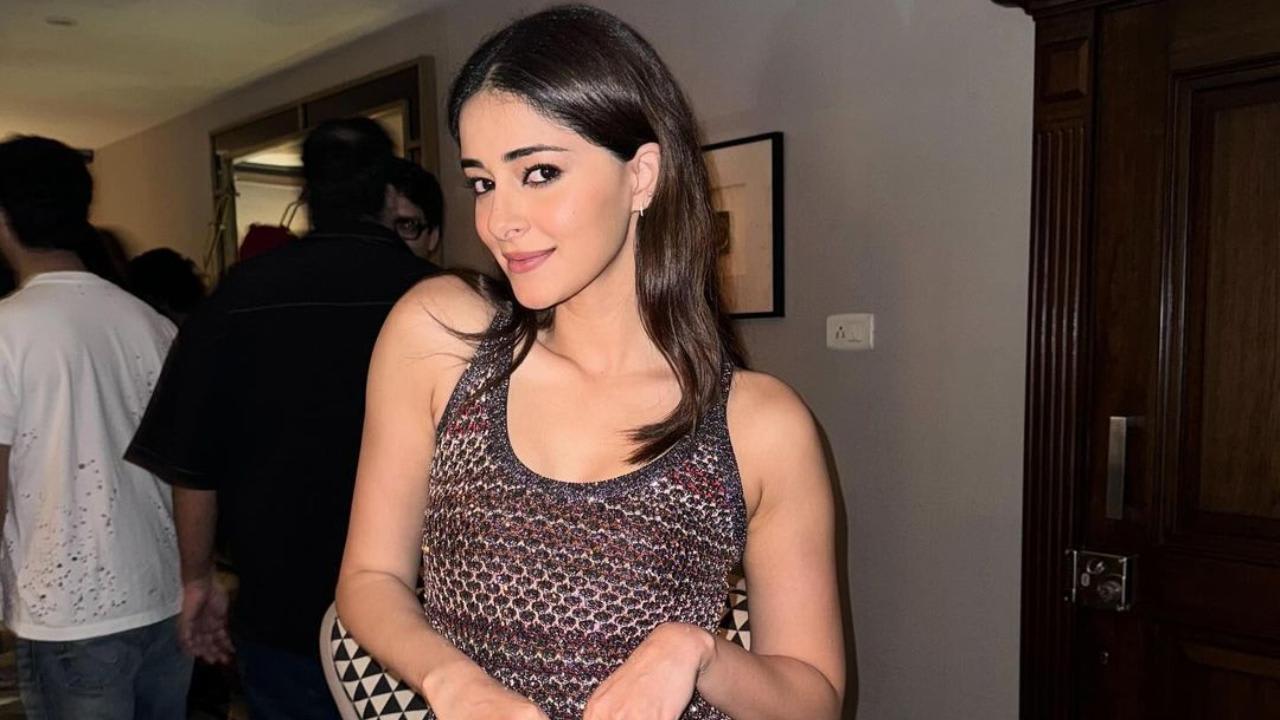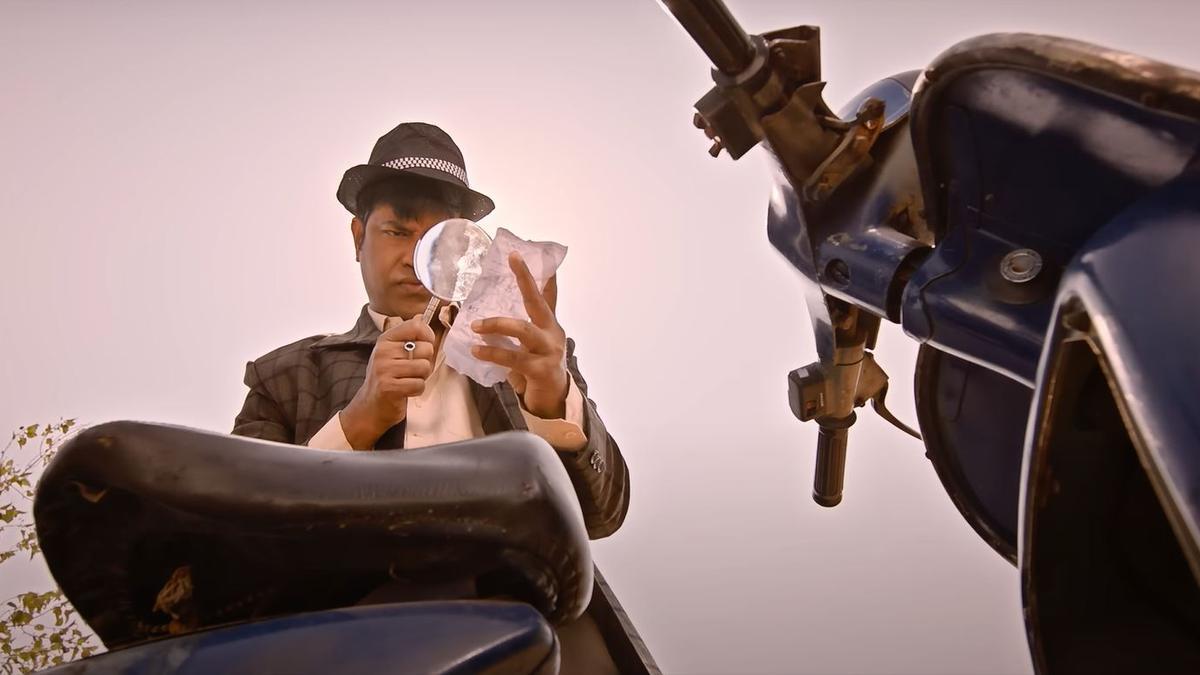
From the mundane to the myth, India’s identity is deeply intertwined with its textiles. They have nurtured craftsmanship, built communities, played a role in national revolutions, and paved the way to create world trade networks. Yet, despite its rich history spanning centuries, it has garnered few enthusiasts as a medium within the arts. Today, textile-based shows are slowly working to change this narrative.
Threads That Bare at the ongoing Delhi Contemporary Art Week (DCAW) showcases how artists can draw inspiration from India’s diverse textile traditions to create multifaceted storytelling. It is being presented at a significant time — when curators and galleries are exhibiting a growing number of textile-based shows in the subcontinent. From Vayan – The Art of Indian Brocades, curated by Mayank Mansingh Kaul, at Delhi’s National Crafts Museum (2023), to Sutr Santati at NGMA in Mumbai (2024), and Entwined – Edition 2 by Apparao Galleries, the interest in textile arts is gaining momentum.
One prominent artist shifting the focal point to textiles is Natasha Das. Traditionally trained in oils, Das transitioned to textiles after encountering the limitations of paint. Collaborating with thread, fabric, and the weaving communities of Assam, she found a new medium to be vulnerable through her art. “I shifted to memories and touch,” she states. “When the pandemic hit, I closed my studio and started working with thread, layering it like oil. Textiles gave me a platform to feel, bond, and be present. My choice to use eri and muga silk in my works stemmed from this experience.”
At DCAW, her work Lahe Land 2 (lahe lahe means ‘slowly’ in Assamese) is a tribute to Assam’s culture and landscape. “It is a visual map constructed from memory. I began by stitching and attaching, creating blocks of colour that are dense and playful threads that connect these spaces,” she elaborates. “The beautiful violet you see is the water hyacinth of Assam; the onion green eri silk is earthy. Each thread carries a memory and has a tale to tell.”
Also on display at Threads That Bare — which features 14 artists — are the works of Geeta Khandelwal and Khadim Ali. Khandelwal has dedicated decades to studying and practising the art of quilt-making. Her exhibit showcases meticulously recreated miniature royal garments from the 18th and 19th centuries using hand-sewing and quilting techniques. On the other hand, Ali draws from miniature and tapestry traditions.
. His works bear witness to his family’s migrations and traumas from the conflict zones of Afghanistan and Pakistan. In his monumental mixed-media work, I’m the Third Script 2, he employs embroidery on cotton and silk, weaving childhood memories on fabric.
Curator-director Sharan Apparao of Apparao Galleries notes, “While the market may seem small currently, I believe it’s on the cusp of expansion with the backing of gallerists and collectors who genuinely appreciate and engage with textile art.”
For many fibre artists, the inspiration comes from the materials themselves. “They have the ability to adapt, making them receptive to different ideas, stories, identities, and emotions,” says Rajarshi Sengupta, an art historian and practitioner. His textile works, inspired by the kalamkari tradition, were featured in the Entwined exhibit. Sengupta’s inquiry into the history of kalam began with master carvers Kondra Gangadhar and Kondra Narsaiah in Andhra Pradesh’s Machilipatnam region.
Sengupta also ventured into the dyeing practices of the Coromandel coastal communities, exploring how these traditional methods influence colour application on textiles. His work Catalogue Konda extends this exploration and ethnographic studies of Deccani textiles and their artisanal histories.
With such significant textile-based art exhibitions being curated, one can’t help but wonder why the sudden surge of interest. Delhi-based Kaul, a curator with a focus on textiles, says, “This is a reflection of a global trend. I have observed that the field of contemporary visual arts tends to draw from varied creative sources from time to time.” He cautions that while this interest in textiles is welcome, it must translate into a better market and sustained commercial viability for the artists and galleries involved.
Textiles are also being revisited from a gendered perspective. Traditionally categorised as a ‘woman’s craft,’ these materials, styles, and processes have long been absent from the universally accepted definition of fine arts. Artists — especially women — are now asserting their agency and challenging this divide.
Varunika Saraf’s The Longest Revolution, part of the 2023 show CheMoulding at Chemould Prescott Road, Mumbai, uses embroidery on a cotton textile. “I am interested in women’s agency, women as makers of their own futures and agents of socio-political change,” she shares. “When I thought about the hopes, beliefs and fears that I share with the women in my life, it seemed natural to embroider.”
Adding to the discourse, Kaul states, “Globally, curators have suggested that this current fixation with textile-based art emerges from an increased attention to women-based art practices.” He believes there is a greater interest in materiality and abstraction than before, likely a natural progression given the long neglect of the field by the art world.
The seventh edition of DCAW runs until September 4 at Bikaner House, signalling a promising future for textile arts in India.
The writer is a Delhi-based museum and arts professional.










